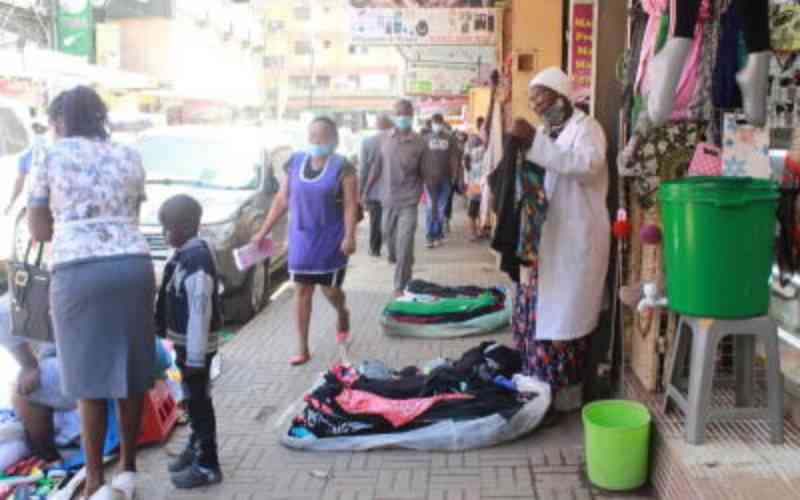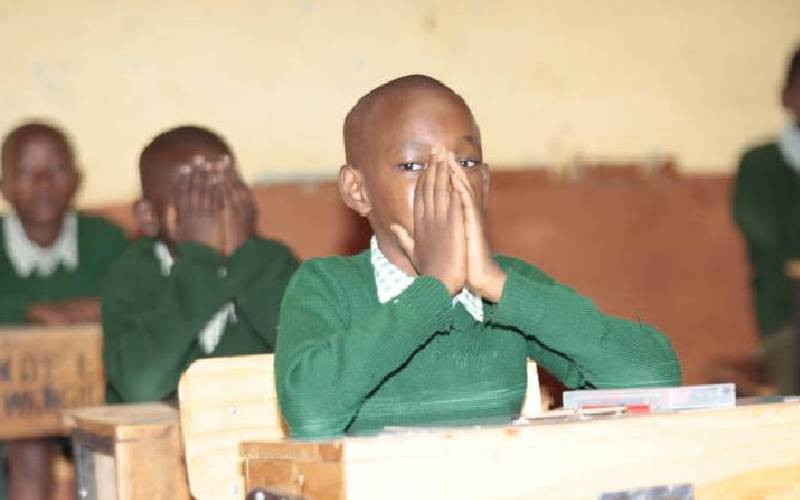
My child was diagnosed with arthritis. I always thought it was a disease for the old...
Well, children do get arthritis, but on its own it is not a diagnosis. If I tell you that your blood levels are low, I should be able to tell you why, like when the bone marrow is not working properly. It is the same with arthritis in children, it is a symptom of a disease, and the spectrum is vast. It could be a sign of cancer or HIV for example. It is our task as rheumatologists to find out what the underlying disease is.
How can one differentiate arthritis from other joint issues?
It may present with an actual manifestation of a problem in the joint. The child might have a swollen joint like a knee. The child may also be in pain, and they would not be moving the painful joint, holding it in one position. If you compare the affected joint with its opposite, it will be warm to touch. The good thing with children is that they are agile and adaptable; they will find other ways of using their joints. If a child was crawling properly and they develop wrist pain, you might find that they will start crawling with their elbows instead. Sometimes they will present with only fever, and if other diseases like HIV and TB are negative, you suspect arthritis. Other signs maybe a skin rash like in lupus that does not respond to conventional treatments.
How common is it among children?
For every 1,000 children it is estimated that one to three have arthritis. In Kenya, if you estimate that the population of children is half that of adults and is 24 million, 720 to 960,000 children have the potential of getting arthritis.
Is it a hereditary disease?
Genetic risk alone is not enough to express a symptom, but within it is interplay of the environment and therefore one can present with arthritis.
What causes it?
Infections, cancer and other rare diseases may present with arthritis. If you have ruled out all these and other causes, then it is what we call Juvenile Idiopathic Arthritis, juvenile for children and idiopathic meaning the cause is unknown.
What we fear the most like the plague is infections and cancers because the treatment we use involves immunosuppressants. In this case, infections and cancers will kill the children faster. Other causes could be Down’s Syndrome, metabolic storage disorders because certain molecules will be stored in the joints, sickle-cell disease or haemophilia.
How common is it?
In my practice, I see five to 10 cases in a week, mainly referred to the clinics or consultations from colleagues whose patients are unable to go to hospital due to the curfews and lockdowns.
When diagnosed early, we notice that the affected joints grow faster. You might find a child with a longer leg or arm but with treatment, this normalises. If diagnosed late, when the growth plates have closed, you might find a child with shortening of a limb and may need adaptive devices like shoe lifts. We work very closely with physiotherapists, occupational therapists and counselors to help the children and parents.
Stay informed. Subscribe to our newsletter
In adults, there are things that would worsen or ease the pain, is it the same in children?
Stress among children worsens the pain. It could be conflicts in school or at home, which are now becoming prevalent. Families have broken up because of these diagnoses, one because they don’t believe in the existence of this disease in children or they have their own sociocultural beliefs on the same. Undue pressure on children also is not good, like a push for certain academic grades, or excellence is a sport. Things that ease the symptoms are ice packs, aromatherapy like lavender oil on a child’s pillow or certain foods that reduce the need for painkillers.
Would a child with arthritis be required to take medicines for the rest of their lives?
Treatment takes at least two years, and a close follow up thereafter. One-third of the children on treatment are on what we call monophasic course, where they can be weaned off the medication and they do well. Another one third will be on a relapsing course, and will get flares when medicines are reduced. In the last one-third of children, there will be no good control of the disease.
Besides arthritis in children, what else does a paediatric rheumatologist treat?
Vasculitides, which causes inflammation in blood vessels, myopathies which are inflammation of muscles, lupus which causes very aggressive disease in our children and auto-inflammatory diseases whose classic feature is a persistent fever that does not respond to anything.
What would make work easier for you?
I would like policymakers to remember the burden of these diseases on children because of the risk of being disabled and using wheelchairs and most importantly living in pain for most of their lives.
1,500 to 2,500 rheumatologists are needed to bridge the gap in care, but at the moment, clinical officers and medical officers should be empowered to identify children early if only to minimise the disability. These children should also have access to medicines, just like with communicable diseases like malaria and pneumonia.
As told to Dr Mercy Korir by Dr Angela Migowa, a pediatric rheumatologist.
 The Standard Group Plc is a
multi-media organization with investments in media platforms spanning newspaper
print operations, television, radio broadcasting, digital and online services. The
Standard Group is recognized as a leading multi-media house in Kenya with a key
influence in matters of national and international interest.
The Standard Group Plc is a
multi-media organization with investments in media platforms spanning newspaper
print operations, television, radio broadcasting, digital and online services. The
Standard Group is recognized as a leading multi-media house in Kenya with a key
influence in matters of national and international interest.
 The Standard Group Plc is a
multi-media organization with investments in media platforms spanning newspaper
print operations, television, radio broadcasting, digital and online services. The
Standard Group is recognized as a leading multi-media house in Kenya with a key
influence in matters of national and international interest.
The Standard Group Plc is a
multi-media organization with investments in media platforms spanning newspaper
print operations, television, radio broadcasting, digital and online services. The
Standard Group is recognized as a leading multi-media house in Kenya with a key
influence in matters of national and international interest.






